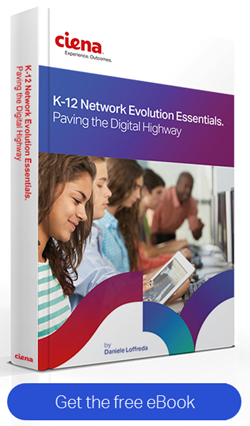EdTech: 6 Reasons Why Your E-Rate Funding Request Will Be Denied
Four months into the 2017 E-Rate 471 review and approval process, we see some interesting developments, some good, some bad. The good news: We’ve noted a significant improvement in approval cycle times and funding commitment issuance. We’ve also noted substantial decreases in lit service pricing. The bad news: Plenty of funding requests are still getting rejected or subject to additional information requirements, many of these for the dark fiber or self-provision options.
Despite the best efforts of USAC to educate districts, providers, and consultants, sorting out the various program options and demonstrating eligibility can be challenging with even the most thorough applications being rejected. The Program Integrity Assurance (PIA) group within USAC reviews the funding request application and approves it, denies it, or requests additional information. So, how can you ensure your request gets approved? Here are some of the most common causes of an E-Rate funding request denial that you can avoid.
 Denied: Your Form Is Late… Or Wrong
Denied: Your Form Is Late… Or Wrong
Although it should be self-evident that applicants must adhere to the Form 471 filing window deadlines, many districts fail to submit their applications on time. Filing the Form 471 late will require an FCC Waiver, but there is no guarantee that it will be granted. In addition to filing on time, the information included in the Form 471 must be complete and accurate. As intuitively obvious as that sounds, USAC has denied many applications due to incomplete and/or inaccurate details.
Denied: Your Requests Are Substantially Different
Besides filing late, the most common reason for denying fiber requests is that the products and services requested on a district’s Form 471 application are deemed ‘substantially different’ than those requested on its Form 470 notice. For example, if a district indicates that it is pursuing the ‘Dark Fiber Network’ option on its Form 470, but then listed ‘Self-Provisioned Fiber Network’ on its Form 471, it will likely be denied. Another example is a district that selects ‘Leased Dark Fiber IRU’ on its Form 470, but applies for ‘Dark Fiber Special Construction’ on its Form 471. Using the term ‘Dark Fiber’ as a catch-all term for the non-lit services options, and confusing the terms ‘Self-Provisioned’ and ‘Special Construction’ appear to be frequent mistakes.
Denied: You Don’t Have Lit Fiber or Third-party Network bids
Another common reason for denial of dark fiber and self-provisioned funding requests is the lack of corresponding ‘Lit Fiber or Third-party Network’ bids. Under the E-rate Second Modernization Order, districts seeking a dark fiber option must also include lit fiber bids within their Form 470 posting. Districts seeking the self-provisioned option must include bids from third-party networks in their Form 470 posting.
Denied: You haven’t demonstrated “most cost-effective” option
This is one of the most prevalent reasons for dark fiber and self-provision option rejections. USAC has been quite strict in its requirement that these options are more cost-effective than lit services. And it requires quantitative evidence and documentation that includes itemized costs (electronics, fiber maintenance, replacement, upgrade costs). Districts also need to avoid requesting a specific network equipment manufacturer’s make and model on their Form 470 or RFP, unless they include a phrase such as ‘or equivalent’ to express their willingness to consider bids providing similar functionality.
Denied: You Didn’t Conduct An Open And Fair Bidding Process
Yet another common reason for denial of a Form 471 application is failure to conduct an open and fair bidding process. A number of districts mistakenly express a preference for self-provisioned or dark fiber vs. leased lit services in their RFPs and/or Form 470 postings. Others identify a preferred vendor, providing advance notice of their requirements to a specific vendor, or use an E-Rate consultant that is closely associated with the vendor to whom the contract is awarded. We’ve heard of other instances in which districts issue a 470, only to tell enquiring respondents that “we’re going to go with our incumbent.”
A number of districts mistakenly express a preference for self-provisioned or dark fiber vs. leased lit services in their RFPs and/or Form 470 postings.
Denied: Your Timing’s Off
Finally, many applications for dark fiber or self-provisioned networks are denied because districts confuse the timing for when they intend to deploy the appropriate electronic equipment to ‘light’ the network. E-rate funding is only available for dark fiber and self-provisioned networks that are constructed and ‘lit’ in the same year for which they seek funding. For example, some districts secure a long-term dark lease for twelve fiber strands, but only intend to light five of those strands the first year, and the remaining strands over the following three years as bandwidth demand grows. This funding application would be denied because the district does not plan to light all twelve strands within the requested funding year. In this case, USAC would advise the district to resubmit the funding application, requesting funding for just the five strands to be lit in that funding year, and submit additional requests in subsequent years when the district needs to light the remaining strands.
Regardless of which option a district chooses, USAC recommends that they consider bandwidth growth. So many administrators, curriculum directors, and teachers often assume their networks will be able to support emerging bandwidth-heavy EdTech applications… until they cannot. They have to get E-Rate right and with no time lost in the process. Since many school districts are heavily dependent on the E-Rate program to help fund their network connectivity requirements, it is imperative that they comply with all USAC regulations and get their funding requests right as accurate and timely as possible.


